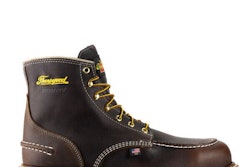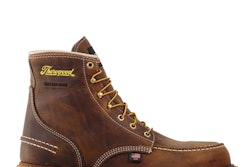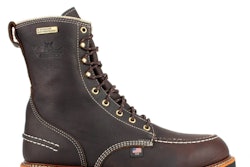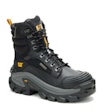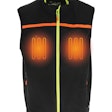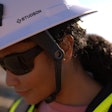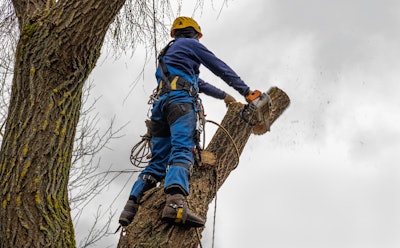
The high-cut boot category contains several options for construction professionals. For logging or forestry work, high-cut boots offer protection from a wide range of hazards, including stray branches, sharp tools or objects, debris and water. Unlike urban working environments, loggers must wrangle and deal with the wild nature of forests which can be unpredictable. This unique requirement makes heavy-duty footwear critical for safe and productive work.
You don’t necessarily have to be in the forest-wrangling field to need a sturdy pair of logging boots. Individuals working on utility poles, farmers, land clearing specialists and vehicle operators in remote areas can benefit from wearing this type of boot for work.
High-cut Features
For leg protection, logger boots feature an 8-in. (or taller) shaft. This fits right in the high-cut boot segment, which starts at 6-in. Logger boots offer plenty of leg and ankle protection, giving individuals a stable base when working on uneven terrain. Be prepared to commit to days of persistent use to fully break in this type of boot. New high-cut boots are generally stiff and take longer to form into your feet than conventional boots.
Traditional logger boots are made from leather. Unlike high-cut rubber boots, logger boots contain laces for secure fits. You should look for a firm fit when buying a pair of logger boots. Your foot should not slide inside the boot. A sliding foot can generate hotspots inside the boot over time. This can injure your foot, damage your socks and affect your overall balance.
Safety Toe
Most heavy-duty logger boots contain safety toe protection. This is often a job requirement for logging, forestry work, utility pole work and more. Steel toe is the top choice for logger boots, as this material is more durable than a composite toe. However, this type of toe protection is heavier and bulkier. Toe protection takes up space on the boot. Therefore, make sure your toes don’t feel tight or cramped when trying on new boots before purchasing.
Heel and Tread Patterns
Logger boots are known to have tall heels for navigating through debris, branches, undergrowth, mud and rugged areas. A raised heel also provides support when walking uphill or on mixed terrain, as well as when climbing trees. It does this by providing arch support and decreasing pressure on hard-working parts of the foot. If you’re not used to a raised heel, it can be uncomfortable making you feel like your toes are being pressed forward.
An aggressive tread pattern helps maintain stability when walking on rough terrain. Traditional logger boots contain caulks or spikes for climbing trees and walking on mixed terrain. While spikes provide additional grip on soil, they hinder performance on hard surfaces, such as roads and sidewalks.
Cost
A solid pair of logger boots costs $400+ as the product uses more material than conventional and low-cut boots. Logger boots used in the field are usually certified to specific safety or performance standards. Boots rated for specific standards tend to cost more due to rigorous testing imposed during the certification process.
Ready to buy logger boots? Check out this IRONPROS article for top logger boot recommendations!
